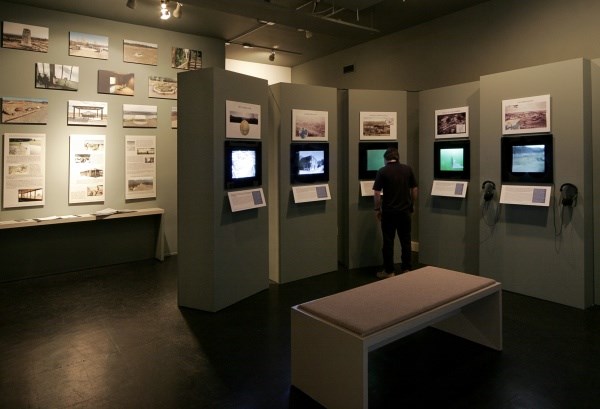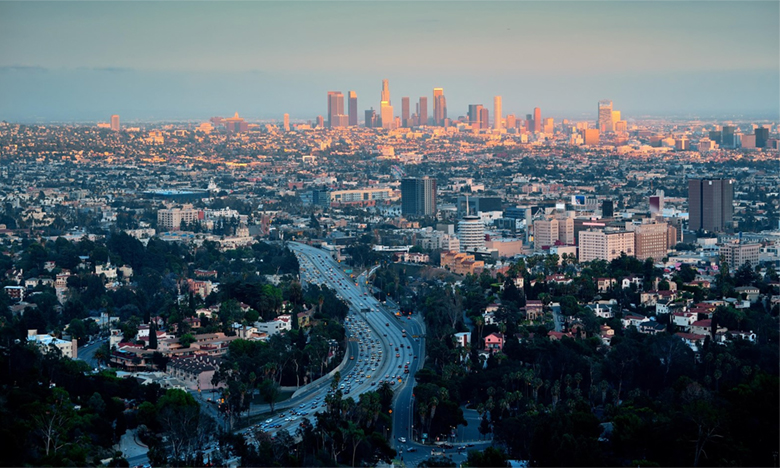In January 2016, a curious book began drawing praise from the New Yorker, the Atlantic and film director Errol Morris. It consisted almost entirely of business cards. Compiled by a former employee of the Los Alamos National Laboratory, the collection formed a ramshackle record of America’s nuclear infrastructure. Los Alamos Rolodex was eerie, humorous and comprehensive — and perfect for a project by Los Angeles’ Center for Land Use Interpretation.
With its oddly generic name and emblem (a sparse image of a globe that’s half midcentury-airline logo, half Bond-villain insignia), the CLUI could easily be mistaken for a government office with power far beyond its public profile. Actually, as Los Alamos Rolodex shows, it just obsessively studies such offices.

Based in a small exhibition space in Culver City, the CLUI was founded in 1994 by Matthew Coolidge, and devotes itself to the “increase and diffusion of knowledge about how the nation’s lands are apportioned, utilized and perceived.” Southern California seemed an apt place to headquarter the institute. “Los Angeles 25 years ago was still basking in its dystopic pall,” Coolidge recalls. “It was a city that was un-self-conscious, uncertain and wild. Just looking at its history seemed subversive.”
You’ll get a similar feeling when you visit. The first thing you’ll see is a wall of free pamphlets, all advertising bizarre attractions across America: underground gardens in Fresno, a golden palace in West Virginia, a museum devoted to Colorado’s prisons. In the bookshop area there are vintage postcards from eccentric photographer Merle Porter alongside architectural studies of Florida outhouses. But the rotating exhibits are where the Center’s distinctive outlook — mixing familiarity with surreality — is most apparent. One recent exhibit investigated American office parks located in sprawling underground caves. Others seem determined to prove that land use we see as “normal” is anything but — a point clearly made by an aerial shot of a lush Phoenix country club, surrounded by acres of arid land.
According to Coolidge, a major inspiration for the Center was the Smithsonian, which he sees as similarly concerned with far-ranging issues of American ecology and culture. But the Smithsonian, being one of the federal government’s most visible institutions, can’t always pursue its research with impunity. The Center, being a smaller, more independent organization, doesn’t have that limitation, Coolidge says, and can “fill in some of the gaps.” Indeed, it’s safe to say that none of the Smithsonian’s 19 museums has ever hosted exhibits like “On-Site Office Trailers: Invisible Architecture of the Urban Environment.” That greater flexibility also allows the Center to pull off memorable stunts: That exhibit on office trailers was hosted in an actual office trailer. For an exhibit about golf courses, the Center’s carpet was replaced with turf.

